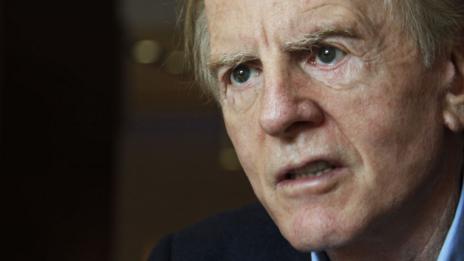John Sculley has had some failures, but there’s one in particular that might always define his career.
Back when Sculley was CEO of Apple in the late 1980s, he gave the go-ahead to an idea called the Apple Newton. It was an early iPad, basically, with a personal assistant that would pave the way for today’s Siri. Seeing it as the future, Sculley dropped more than $100 million into the project.
But with no available mobile-phone networks and limited internet access, there was little that the Newton could actually do. The Newton was ahead of its time. Apple expected to sell one million Newtons in its first year. Instead, it sold just 50,000. In 1993, a near-bankrupt Apple forced Sculley out.
“At the time it happens, it’s very embarrassing and it hurts,” Sculley recalled recently from New York City. “It took years to overcome, and it really knocked the wind out of me.”
In time, though, Sculley saw this failure as something else entirely. The flop was something he could learn from, and in the technology and healthcare businesses he owns now, he uses Newton as a litmus test to help determine the right timing to jump into new technology.
Sculley’s ability to admit failure and use it as a way to shape future decisions is a concept that’s pretty new to business. A generation ago, top managers were expected to be infallible, at least on the surface, says Gerard Seijts, professor of organisational behaviour at Ivey Business School in London, Ontario. When they did nose dive, they shifted blame, moved on, and hopefully never spoke of the problem again.
Of course, it’s still like that in some companies.“Let’s not kid ourselves. In some organisations, failure is a career-ending event,” said Seijts, executive director of the Ian O. Ihnatowycz Institute for Leadership. “It’s man overboard and time to look for whom to blame.”
But at better-managed companies, Seijts said, failure is an accepted part of taking a risk. Failure means taking time to reflect on what went wrong, what can be learned, and to actually reward your staff for the willingness to take risks.
How to react to failure
The first step, Seijts said, is to take ownership and responsibility for the failure. Don’t look for an employee to sack when things go wrong. Consider it the team’s collective loss, and be willing to admit that you made the call — or at least OK’d the call — that led down the wrong road.
“Maybe the most important step is to reflect on what went wrong,” Seijts said.
It’s the review of the failure that can be most crucial to making sure your team learns from the setback, said Lynn Wooten, associate dean and professor at University of Michigan’s Ross School of Business. “You have to get out from behind your desk and meet with your team,” she said. “This is a job that can’t be done by email.”
Be sure your staff is comfortable with the post-failure review. They need to know this isn’t a process of searching for a person to blame, and they need to know it’s OK to tell the boss what you did to contribute to the problem. “It’s about not being a bully but a colleague. They need to know you’re not going to attack them,” Wooten said.
Through all of this review, project confidence that things are going to get better. Maybe you don’t have the next plan designed yet – that might be something that comes out of meetings with your staff – but your team needs to know that you’re the leader to get them headed in the right direction.
“As a manager, you need to admit failure but still seem in charge, and that’s going to be difficult,” Wooten said.
What’s next after a setback
With the review completed, determine what can be done differently in the future. Your team needs to know what’s off limits next time to make sure you don’t end up in the same spot.
Then set goals so that your employees can strive for something new. Check in regularly to make sure you’re hitting those benchmarks and leaving that failure behind you.
Failure to success
It took a few years after the Newton failure, but Sculley finally figured out a way to personally process the failure. His was a very public failure and that meant dealing with a hit to his pride alongside everything else he felt.
“There’s nothing fun about failing. It’s embarrassing and can really hit you in your self-confidence,” Sculley said.

Not all of Sculley’s rough times in business ended so poorly. Back when he was running Pepsi Co, from 1977 to 1983, he had another failure that ended far better. The company had been trying for years to design a glass bottle that could compete with Coca-Cola’s iconic hourglass-shape. But all of the designs violated Coke’s trademark. So Pepsi took the failure and made a pivot. The company decided to give customers a bigger package, the two-litre plastic bottle, which helped redefine the soft-drink industry.
Now, Sculley sees his failure at Apple far differently, too. The recent popularity of the iPad proves that he was right in thinking it was the future – it was just that the company brought it to market too early. It’s a lesson he’s taken with him in helping to found several new companies in recent years, including as a founding investor in mobile-phone provider Metro PCS, board member of software maker Open Peak, and creator of Obi, the Singapore-based budget smart phone marketed in emerging markets.
“Like anyone who’s been an executive for many years, I have a lot of failures,” Sculley said. “The secret is figuring out how to process those failures and then pivot.”






Leave a reply